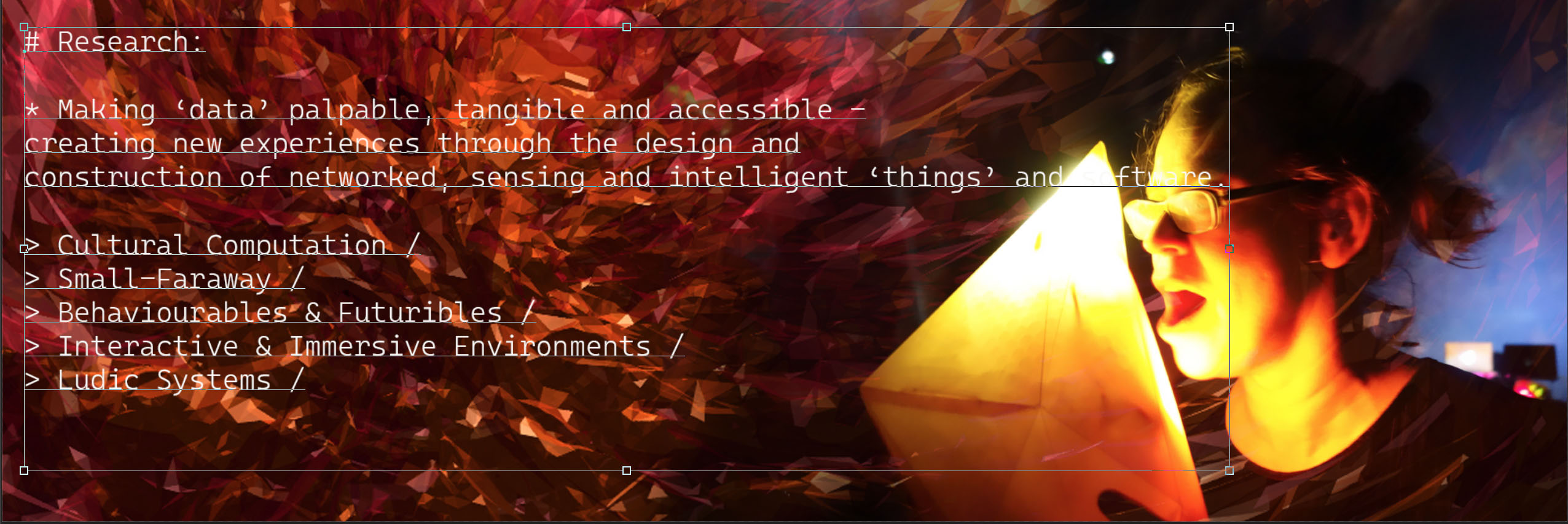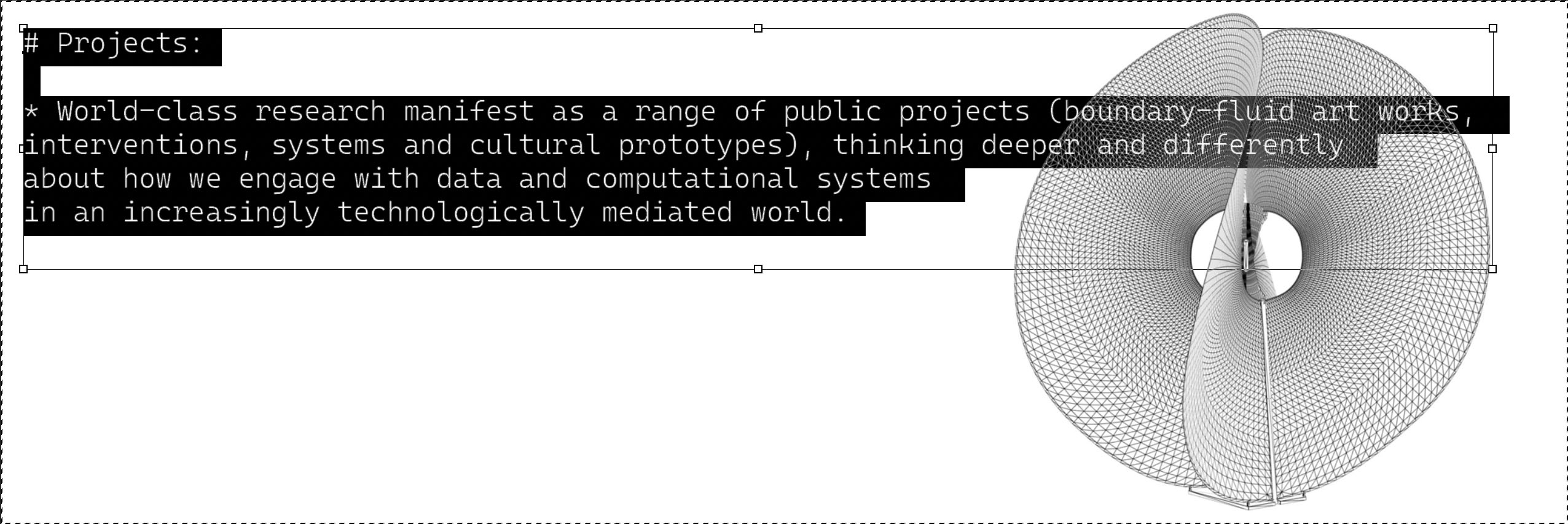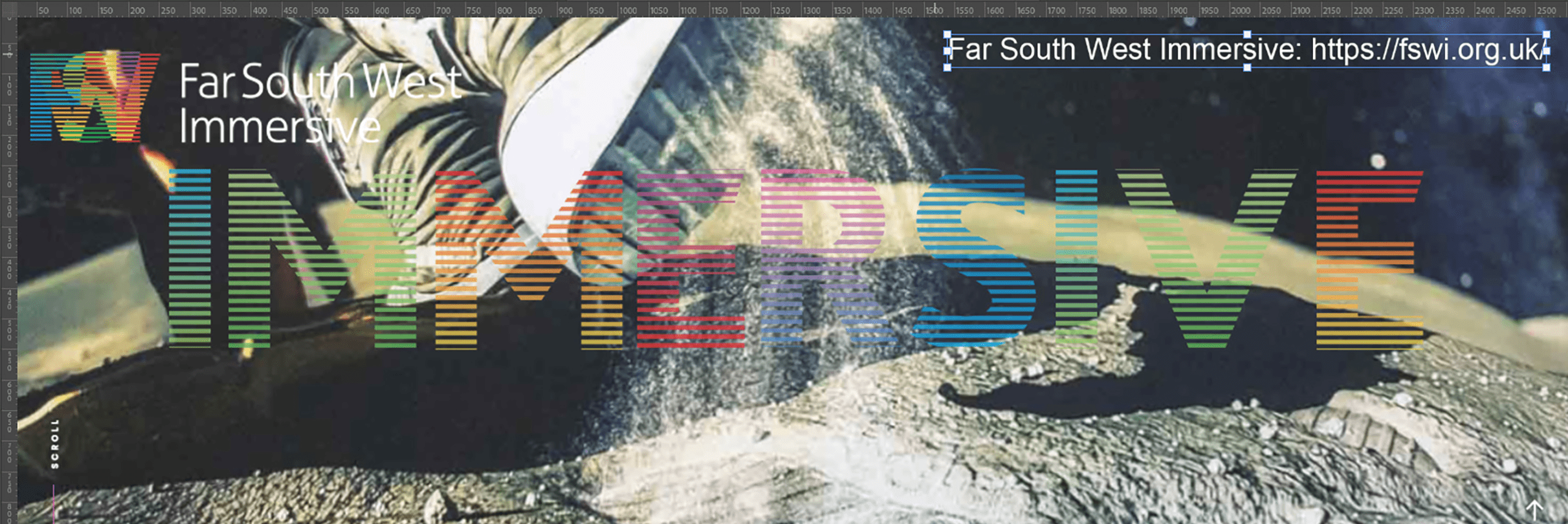
ART|SCI CENTER.
Mike Phillips Lecture + Exhibition Opening: 07-16/03/12.
http://artsci.ucla.edu/?q=events/mike-phillips-lecture-exhibition-opening
Opening March 7
Lecture @ 2pm
Exhibition Openings: 5-7pm
Location: Lecture @ UCLA Broad Art Center, room 5240, Exhibition @ CNSI Gallery
Exposure is an exhibition of work by Mike Phillips, Professor of Interdisciplinary Arts, School of Art & Media at Plymouth University. Mike Phillips is director of i-DAT, a Principal Supervisor for the Planetary Collegium and a supervisor of the Transtechnology Research Groups. His R&D orbits digital architectures and transmedia publishing, and is manifest in a series of ‘Operating Systems’ to dynamically manifest ‘data’ as experience in order to enhance perspectives on a complex world. The year that Eastman Kodak filed for bankruptcy protection was the same year Fujifilm moved from film production to beauty products (1). This did not just mark a technological shift from film grain to nanoparticles but also a massive cultural shift – a shift from capturing the face on film to the embedding of ‘film’ in the face. The thing that once froze the face in an eternal youthful smile is now the anti-aging nanoparticle that preserves the face we wear. Barthes described the face on film as representing “a kind of absolute state of the flesh, which could be neither reached nor renounced”2. Now this absolute state is closer to hand and we will walk around wearing our old photo albums as our face, peeling away the frames like layers of dead skin. Our essence, like Garbo’s, will not degrade or deteriorate.
‘Viewed as a transition’ Exposure explores the deterioration of the flesh through the temporality of the Atomic Force Microscope (AFM). From the 60th of a second exposure of the Kodak Brownie camera to the 20-minute scan of the AFM – the closer the subject the longer the ‘exposure’. Incorporating data from an AFM scan of a basal cell carcinoma Exposure explores the convergence of ideologies constructed around imaging technologies. Through a subtle interaction the viewer conjures up a dynamic data/image of a skin cancer – over exposed to the sun – or the intense light of the camera flashgun.
EXPOSURE
The year that Eastman Kodak filed for bankruptcy protection was the same year Fujifilm moved from film production to beauty products(1). This did not just mark a technological shift from film grain to nanoparticles but also a massive cultural shift – a shift from capturing the face on film to the embedding of ‘film’ in the face. The thing that once froze the face in an eternal youthful smile is now the anti-aging nanoparticle that preserves the face we wear. Barthes described the face on film as representing “a kind of absolute state of the flesh, which could be neither reached nor renounced”(2). Now this absolute state is closer to hand and we will walk around wearing our old photo albums as our face, peeling away the frames like layers of dead skin. Our essence, like Garbo’s, will not degrade or deteriorate. ‘Viewed as a transition’ Exposure explores the deterioration of the flesh through the temporality of the Atomic Force Microscope (AFM). From the 60th of a second exposure of the Kodak Brownie camera to the 20-minute scan of the AFM – the closer the subject the longer the ‘exposure’. Incorporating data from an AFM scan of a basal cell carcinoma Exposure explores the convergence of ideologies constructed around imaging technologies. Through a subtle interaction the viewer conjures up a dynamic data/image of a skin cancer – over exposed to the sun – or the intense light of the camera flashgun.
Exposure builds on a portfolio of data driven work and ‘nano’ art developed by the artist and collaborators, such as Spectre [ˈspɛktə/] (Phillips, M. 2012) (3), A Mote it is… (Phillips, M. 2010) (4) and i-DAT’s Operating Systems (5). These projects explore the ubiquity of data streamed from an instrumentalised world and its potential as a material for manifesting things that lie outside of the normal frames of reference – things so far away, so close, so massive, so small and so ad infinitum. These digital practices use alchemical processes that enable a series of transformations: from data to code to experience to behaviour.
The instruments that now do our seeing for us translate their visions through data. The emergence of digital imaging technologies that provide access to photons from the edge of the universe and the atomic force that binds molecules offer us a whole new vocabulary for articulating the world. Atomic Force Microscope, Scanning Electron Microscope, X-ray computed tomography and the Radio telescope open up new dimensions, as more dimensions are unveiled, more realities are modelled and more truths envisioned. There are (to paraphrase Hamlet) more things in heaven and earth than currently dreamt of in our media philosophy.
“A mote it is to trouble the mind’s eye.” (6) A Mote it is… explored our relationship with technologies that trouble the mind’s eye. Our ability to shift scales, from the smallest thing to the largest thing has been described as the ‘transcalar imaginary’ (7). Hamlet’s Fathers Ghost is seen but not believed and one is left to wonder if it is just the seeing of it that makes it real – its existence totally dependent on the desire of the viewer to see it. The ‘mote’ or speck of dust in the eye of the mind of the beholder both creates the illusion and convinces us that what we see is real. Something just out of the corner of our minds eye, those little flecks magnified by our desire to see more clearly. Yet the harder we look the more blurred our vision becomes. A ‘mote’ is both a noun and a verb. Middle English with Indo-European roots, its early Christian origins and Masonic overtones describe the smallest thing possible and empower it with the ability to conjure something into being (so mote it be…). This dual state of becoming and being (even if infinitesimally tiny) render it a powerful talisman in the context of nano technology.
i-DAT’s Operating Systems project was initially inspired by early work exploring the potential of spaces recording events that happened within them. Arch-OS was described as a ‘Psychometric’ Architecture, a viral infection of a building that replayed at night the activities that took place during the day. A kind of dreaming architecture. Psychometry… “The concept of objects (or places) seeming to record events and then play them back for sensitive people is generally referred to as psychometry. The objects can be called psychometric objects or token objects” (Morris, R. 1986) (8).
Spectre suggests that the Schauraum, the site of the exhibition, is such an architecture and that the memories of the building are bonded to its fabric by the atomic forces that have now been unlocked by the Atomic Force Microscope. Spectre builds on the collision of A Mote it is… and Psychometric Architecture by drawing on the experiences of Professor Gustav Adolf Schwaiger, the Technical Director of the Austrian Broadcast Corporation, and his collaboration with the famous medium Rudi Schneider in the late 1930’s to the early 1940’s. “G.A. Schwaiger… conducted some private (and rather obscure) experiments with the famous medium Rudi Schneider in the studio of a female painter… In fact the flat could have been right above our exhibition space (Schauraum)” (Fiel, W. 2011) (9). Spectre extends these experiments by replaying the physical remnants of these happenings as captured in the atomic forces binding the dust from their laboratory. The spectres of Schwaiger, Schneider, the painter and the ectoplasm they conjured up are manifest through the Spectre installation.
References:
1: Pico-Collagen (acetyl hydroxyproline), http://and-fujifilm.jp/en/html/skincare/index.html
2: Roland Barthes The Face of Garbo, Mythologies London: Vintage, 1993; pp. 56-7
3: Phillips, M. ‘spectre [ˈspɛktə/]’, Schauraum. Quartier21 (Electric Avenue), MuseumsQuartier, Museumsplatz 1/5, 1070 Wien, Austria. 27.01-18.03.2012.
4: Phillips, M. ‘A Mote it is…’ Art in the Age of Nano Technology, John Curtin Gallery, Curtin University of Technology, Perth, WA. For exhibition in 02/2010. http://www.i-dat.org/a-mote-it-is-update/
5 : http://www.i-dat.org/i-dat-launches-op-sycom/
6: Shakespeare, W. Hamlet. Act 1, Scene 1, Line 129.
7. Transcalar Imaginary. “mundus imaginalis traversing the micro, meso, and macro…” Curated by David McConville. http://www.scoop.it/t/transcalar-imaginary/
8. Robert L. Morris (Koestler Chair of Parapsychology at the University of Edinburgh 1985 to 2004) in a letter to the artist 21 October 1986.
9. Email correspondence with Wolfgang Fiel. 2011.
Exposure Max patch and source videos-.zip.
With thanks to:
i-DAT.org /
Luis Girao at Arshare /
Professor Genhua Pan at the Wolfson Nanotechnology Laboratory at Plymouth University.















You must be logged in to post a comment.